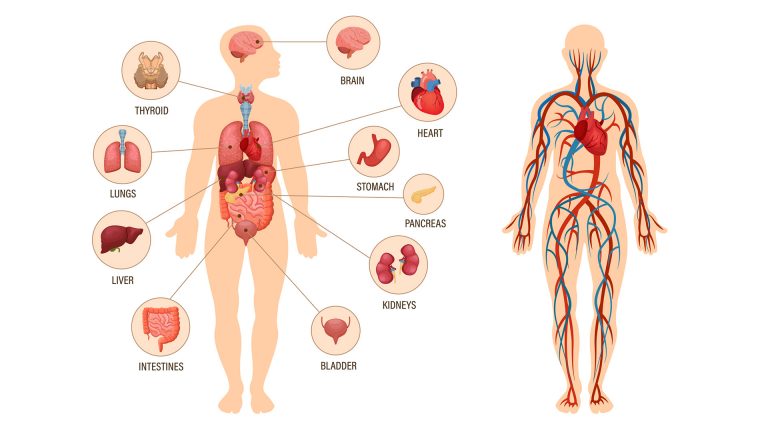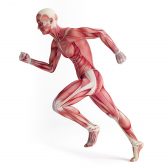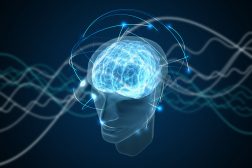The Human Physiology

Human physiology, the science that deals with the physiological attributes of the human body
Physiology is the study of how living organisms function. Thus, human physiology deals specifically with the physiological attributes of the human body at various levels of organization, i.e. from cellular to tissue and ultimately, physiology at the biological system level. Human physiology is important because it imparts an in-depth understanding of the vital processes that the body does so as to attain the utmost goal of maintaining homeostasis.
Objectives
- To fully understand the mechanisms of human physiology
- To become familiar with the different common parts of a typical eukaryotic cell and the common metabolic activities carried out by the cell.
- To describe in detail the different biological systems of the body and their primary functions as an organ and as a whole
- To be able to explain the different regulatory mechanisms to sustain homeostasis
Key Points
- The body is comprised of different elements with hydrogen, oxygen, carbon, and nitrogen as the major four.
- A typical eukaryotic cell is comprised of a cytoplasm with different organelles, such as nucleus, endoplasmic reticulum, Golgi apparatus, and mitochondria, surrounded by a lipid bilayer cell membrane.
- The cell carries out various cellular activities, such as molecular transport, gene expression, protein synthesis, anabolism, and catabolism.
- Homeostasis is the relatively stable conditions of the internal environment that result from compensatory regulatory responses performed by homeostatic control systems.
- Specialized cells perform an indispensable function. Neurons, for instance, generate and send electric signals to elicit response. Muscle cells are specialized in generating force and movement. Secretory cells release chemicals, e.g. hormones, which can affect (i.e. stimulate or inhibit) a biological activity.
- Consciousness can be defined by behavior or by electrical pattern of brain activity.
- The human body is comprised of different biological systems, e.g. circulatory system (responsible for the transport of molecules, blood cells, and nutrients), urogenital system (responsible for the regulation of water and inorganic ions), and gastrointestinal system (responsible for the breaking down of food particles).
Chemical Composition of the Body
The body is comprised of different elements with hydrogen, oxygen, carbon, and nitrogen as the major four. This tutorial will help you understand the chemical composition of the body. This will come in handy when considering the various interactions between cells and structures. ..
Movement of Molecules Across Cell Membranes
Molecules move within the cell or from one cell to another through different strategies. Transport may be in the form of simple diffusion, facilitated diffusion, active transport, osmosis, endocytosis, exocytosis, epithelial transport, or glandular secretion. This tutorial provides elaborate details on each of these mechanisms. Find out how. ..
Genetic Information and Protein Synthesis
Genes are expressed through the process of protein synthesis. This elaborate tutorial provides an in-depth review of the different steps of the biological production of protein starting from the gene up to the process of secretion. Also included are topics on DNA replication during interphase of the cell cycle, DNA mutation and repair mechanisms, gene pool, modification, and diseases…
Protein Activity and Cellular Metabolism
Proteins have a crucial role in various biological activities. Get to know how proteins are able to perform as enzymes, cofactors, or regulators. In this tutorial, you will also know the common metabolic pathways of biomolecules, such as glucose and other carbohydrates, fats, proteins and amino acids, and essential nutrients…
Homeostatic Mechanisms and Cellular Communication
Homeostasis is the relatively stable conditions of the internal environment that result from compensatory regulatory responses performed by homeostatic control systems. Know the different components of homeostatic control systems, homeostatic regulators, and the various biological processes that homeostasis entail…
Neural Control Mechanisms
Neurons generate electric signals that they pass along to the other neurons or target tissues. In this tutorial, you will find the basic structure of a neuron, the different classes of neurons, and membrane potentials. It also includes the structure of the nervous system…
Sensory Systems
A sensory system is a part of the nervous system consisting of sensory receptors that receive stimuli from the internal and external environment, neural pathways that conduct this information to the brain and parts of the brain that processes this information. Know the different sensory systems of the human body as elaborated by this tutorial…
Principles of Hormonal Control Systems
Hormones are essential in the regulation of the activity of the various biological systems of the human body. The inefficiency of any of these hormonal control systems may lead to the improper functioning of the body. In this tutorial, get to know the different classes of hormones, metabolism, mechanism, and control of hormone secretions. ..
Control of Body Movement
Some of the body movements can be controlled at will, others cannot. The body has a motor program, which is the pattern of neural activities required to perform a movement. Learn more about this topic in this tutorial. Find out the mechanisms involved in length-monitoring systems, alpha-gamma coactivation, and withdrawal reflex…
Consciousness and Behavior
Human consciousness and behavior are an interesting topic since they are determined and controlled by the brain. Consciousness can be defined by behavior or by electrical pattern of brain activity. Read this tutorial to learn about brain activities, such as sleep, attention, emotion, motivation, consciousness disorders, learning, and memory…
Circulation
The circulatory system is key to the transport of vital biomolecules and nutrients throughout the body. Learn about the different components and functions of the human circulatory system dealt with in detail in this tutorial. The lymphatic system is also elucidated elaborately here…
Respiration
The human respiratory system is an efficient system of inspiring and expiring respiratory gases. This tutorial provides details of the different parts and functions of the respiratory system…
Kidneys and Regulation of Water and Inorganic Ions
The kidneys are responsible for the regulation of water and inorganic ions. Read this tutorial to learn about the different parts of the kidneys and its role in homeostasis…
Digestion and Absorption of Food
The gastrointestinal system breaks down particles of ingested food into molecular forms by enzymes through digestion and then transferred to the internal environment by absorption. Find out more about these processes carried out by the gastrointestinal system through this tutorial…
Regulation of Organic Metabolism, Growth and Energy Balance
The human body is capable of regulating growth and energy balance through various feedback mechanisms. Get to know the events of absorptive and post-absorptive states. This tutorial also describes the endocrine and neural control of compounds such as insulin and glucagon. It also deals with the regulation of growth, heat loss, and heat gain.
..
Human Reproduction
Humans are capable of only one mode of reproduction, i.e. sexual reproduction. Haploid sex cells (gametes) are produced so that at fertilization a diploid zygote forms. This tutorial is an in-depth study guide regarding male and female reproductive physiology…
Cell Structure
A typical eukaryotic cell is comprised of cytoplasm with different organelles, such as nucleus, endoplasmic reticulum, Golgi apparatus, mitochondria, and so on. The cellular contents are surrounded by a double layer, cell membrane. These cellular structures and cell junctions are elaborated in this tutorial…

















